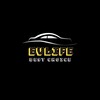- Admin
- Oct 25, 2024
- Buying Guides
- Read: Small Medium Large
BYD EV Teardown In Japan Reveals The Secret To Its Affordability
Japan used to be a world leader in electric and electrified vehicles in the early 2000s, but its lead has since subsided, and it lags behind most developed nations in this regard. China is the undisputed global EV leader these days, and the Central Japan Economic and Trade Bureau organized a seminar that involved the teardown of multiple EVs to see how others are already so advanced.
According to Nikkei, the BYD Atto 3 impressed attendees with how affordable it is given its size and specifications. In China, where it’s called the Yuan Plus, it starts at 139,800 yuan, or just under $20,000, and for that, you get a 201 horsepower EV with a 50-kilowatt-hour battery that gives it a claimed CLTC range of 267 miles (430 km).
The larger optional 60.5-kWh battery ups the range to 317 miles (510 km) for an additional 10,000 yuan or $1,400. This larger pack is also offered on the European version of the Atto 3, which costs nearly twice as much as it does in China. The higher price is the result of both markup and import tariffs, which are set to rise starting next month.
The Atto 3 teardown in Japan revealed one of the ways BYD manages to keep costs down and pass the savings down to the person who buys the car. It’s all about producing as many of the components as possible in-house and integrating them. The source article highlights the so-called “E-Axle” used by BYD, which is comprised of eight different components.
It includes not only the motor, inverter, transmission and controller but also the onboard AC charger, the DC-to-DC converter and the battery monitoring system (BMS). This approach, combined with the economies of scale (the larger the number of cars you build, the cheaper you can build them) goes a long way toward explaining how these highly competent Chinese EVs can be sold at such low prices.
The BYD Atto 3 was chosen for this project not only because of its international success but also because it ranked very highly in the 2023 Japan EV of the Year awards and another BYD model won.
Kenichi Ito, director of industrial machinery company Sanyo Trading and one of the seminar organizers, noted that "Chinese manufacturers attach great importance to low-cost production” and "their views on quality are different from those of Japanese manufacturers." This was a subtle way of saying they are not built to the same standard, but the market doesn’t seem to mind, and BYD sold 300,000 Atto 3s in the vehicle’s first year of production starting in February 2022—it's been doing quite well in some European markets too.
Tesla has a similar approach of combining multiple components to reduce costs. The best example is the Model Y’s structure, which consists of just two major pieces instead of 70 separate elements like in the smaller Model 3. Interestingly, even though this saves costs and cuts complexity, Tesla isn’t interested in pursuing gigacasting further and applying it to other models, even though it commissioned and acquired some of the world’s most impressive die-casting presses.
This could be because Tesla’s interest has now shifted more toward self-driving technology than advancing car-building techniques.




